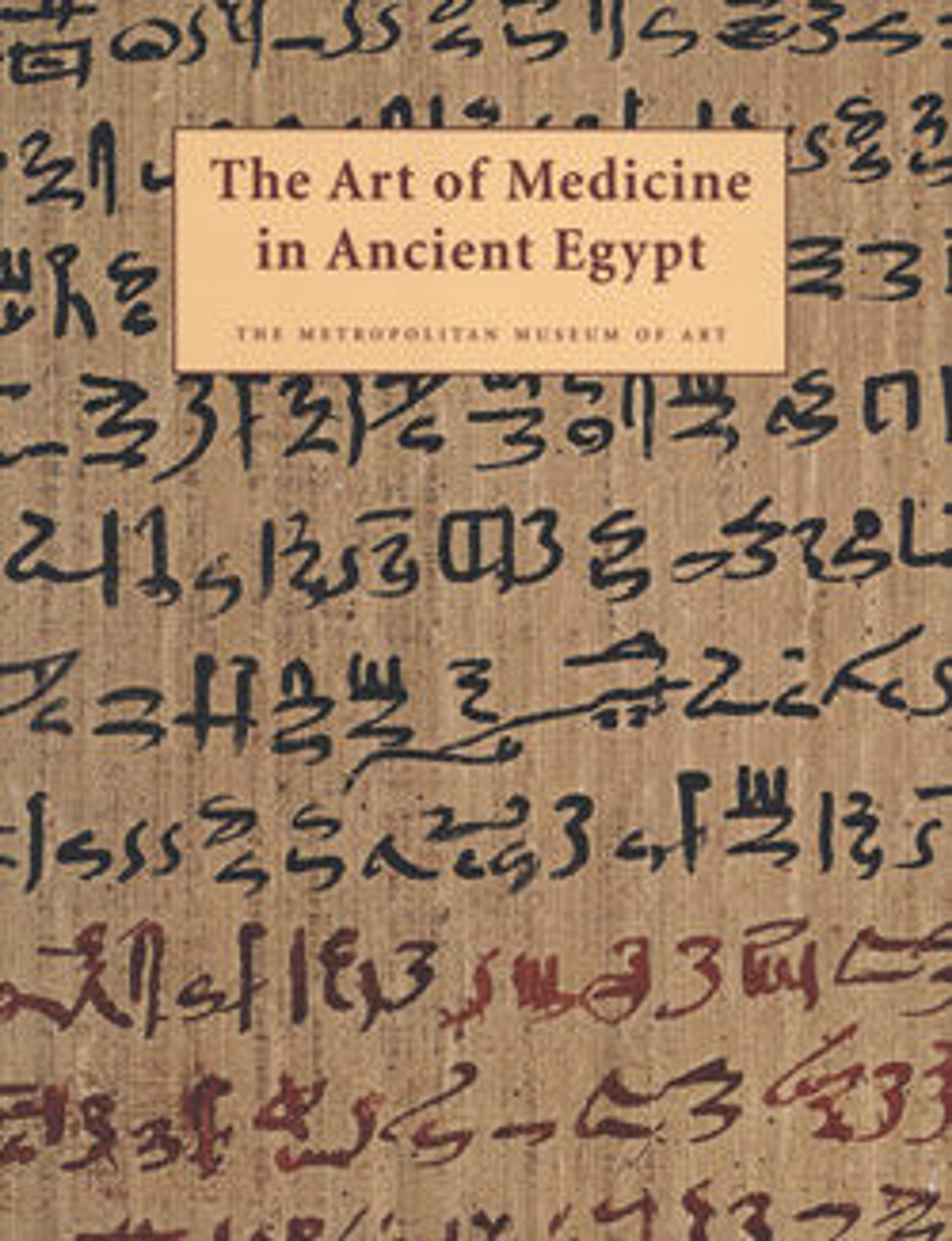Pharmaceutical jar
The incised inscription on this large jar identifies the contents of the vessel as "Special ointment of the Manager of the Red-Crown Enclaves and Chief Physician, Harkhebi." The man to whom the jar belonged probably lived in the Delta town of Buto; the "Red-Crown Enclaves" was an ancient area of that town, and his name, which means "Horus of Khemmis," refers to the site near Buto where the infant Horus was hidden by his mother, Isis, as described on the Metternich Stela (No. 51).
Ointments are frequently cited in medical papyri as a component in prescriptions, and the contents of this jar may have been employed by Harkhebi for that purpose. It is also possible that the jar was made for the physician's tomb, but this is less likely, since Harkhebi's name lacks the epithet "justified," which was usually appended to the name of the deceased.
Ointments are frequently cited in medical papyri as a component in prescriptions, and the contents of this jar may have been employed by Harkhebi for that purpose. It is also possible that the jar was made for the physician's tomb, but this is less likely, since Harkhebi's name lacks the epithet "justified," which was usually appended to the name of the deceased.
Artwork Details
- Title: Pharmaceutical jar
- Period: Saite Period
- Dynasty: Dynasty 26
- Reign: reign of Amasis
- Date: 570–526 BC
- Geography: From Egypt
- Medium: Travertine (Egyptian alabaster)
- Dimensions: H. 47 × Diam. 34 cm, 22 kg (18 1/2 × 13 3/8 in., 48.4 lb.)
- Credit Line: Rogers Fund, 1942
- Object Number: 42.2.2
- Curatorial Department: Egyptian Art
More Artwork
Research Resources
The Met provides unparalleled resources for research and welcomes an international community of students and scholars. The Met's Open Access API is where creators and researchers can connect to the The Met collection. Open Access data and public domain images are available for unrestricted commercial and noncommercial use without permission or fee.
To request images under copyright and other restrictions, please use this Image Request form.
Feedback
We continue to research and examine historical and cultural context for objects in The Met collection. If you have comments or questions about this object record, please complete and submit this form. The Museum looks forward to receiving your comments.
